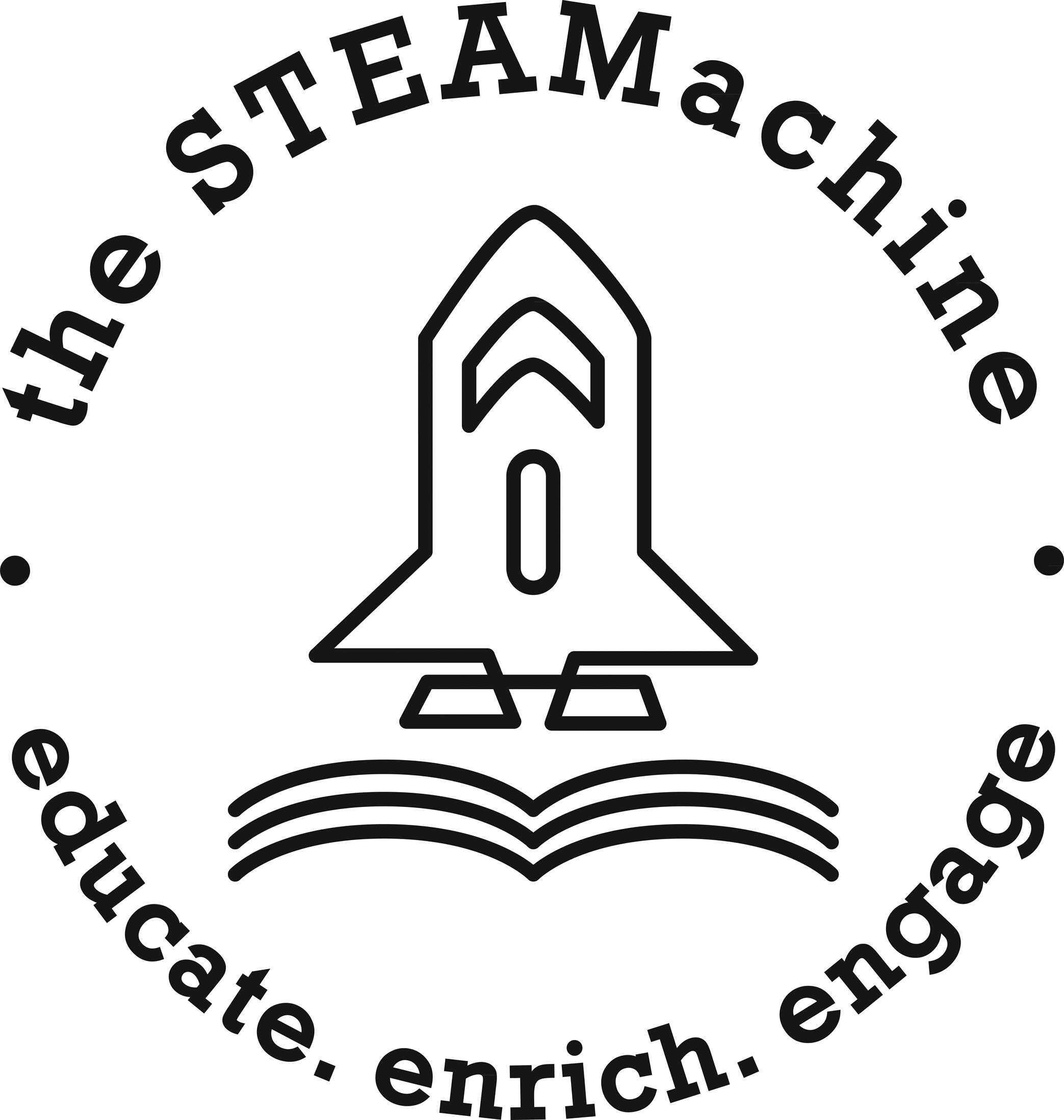The Case of The Missing Chocolate
If cut and divided a certain way, a chocolate bar can appear to create infinite pieces of chocolate. However, due to the Law of Conservation of Matter, this can't be true. Can you solve the case of the missing chocolate piece?
Standards included in this lesson: NGSS K-LS1-1, NGSS 1-LS1-1, NGSS 2-PS1-1, NGSS 2-PS1-4, NGSS 4-PS3-2, CCSS.MATH.CONTENT.K.G.A.3
Materials
The STEAMachine chocolate bar template. Click HERE to download.
Scissors
(Alternatively, you can do this experiment with a real chocolate bar and a knife instead!)
Step 2
With your scissors, cut along the dotted lines that are on the template or use a knife to follow the cuts from the template.
Step 3
Take out the smallest rectangle from the top left of your chocolate bar.
Step 4
Slide around some of the pieces to get a rectangle-shaped chocolate bar again. Where did the missing piece go?
BONUS PROCEDURE - (Is this chocolate really unlimited?)
Step 1
Measure the template or chocolate bar before cutting out all your pieces. You will need to measure both length and width (in inches).
Step 2
Use your measurements to find the area of the chocolate bar. Remember, the formula for the area of a rectangle is length x width.
Step 3
Next, take out the small piece from top left and rearrange the chocolate bar as you did in step 4 of the regular procedure.
Step 4
Now find the length and width of your newly arranged chocolate bar.
Step 5
Use the area of a rectangle formula, length x width, to find out the area of the newly arranged chocolate bar.
Step 6
Is the chocolate bar unlimited? Does the area stay the same? Why might the area be different?
Science Explanation
Kindergarten - 2nd Grade . . .
- NGSS Standards: NGSS K-LS1-1 | NGSS 1-LS1-1 |NGSS 2-PS1-1 | NGSS 2-PS1-4
- As humans, we need food in order to live and grow. This is true for all animals in the world, like a frog that eats insects in order to live and grow
- Food gives us energy, which we use to perform our daily life processes
- Does chocolate like the chocolate bar in our experiment help you live and grow? Where do you think the energy from ingredients for a chocolate bar come from?
- Surprisingly, the energy from the ingredients of a chocolate bar come from the sun!
- Think about the transfer of energy between plants and animals, how do you think this energy got from the sun to a chocolate bar in your hand? (Answer: The sun provides the energy for a cacao tree to produce its cacao pods, which are the main ingredient in chocolate. At the same time, the sun provides energy for grass to grow, which cows then eat to grow and produce milk for the chocolate as well)
- Humans, like all animals, have external body parts that help them live.
- What external body parts helped you in eating this chocolate bar? (Possible answers: Teeth, hands, tongue)
- When you first buy a chocolate bar, what state of matter is it in? (Answer: Solid)
- If you were to leave a chocolate bar in the sun, or hold it within your hands, what do you think would happen? (Possible Answer: The bar would become liquid and melt)
- Temperature plays an important role in the state of matter of an object, and in this case, heating the bar can cause it to go from a solid phase to a liquid phase.
3rd Grade - 5th Grade . . .
- NGSS Standard: NGSS 4-PS3-2
- Energy can take many different forms, and it can be transferred between different objects in many different ways
- Can you think of an example of energy transfer between two objects? (Possible Answer: Energy from the sun heating up your body)
- What kind of energy transfer do you think happens when you hold the chocolate bar in your hand? (Answer: Heat energy from the hands transferring into the chocolate bar)
- This extra heat energy in the chocolate bar is why chocolate melts when we hold it in our hands.
- Keep in mind that while energy can be transferred in all of these different ways, energy can never be created or destroyed out of nowhere.This is known as the Law of Conservation of Energy
- Similar to the Law of Conservation of Energy is the Law of Conservation of Matter, which instead states that MATTER cannot be created or destroyed out of nowhere.
- Knowing that matter cannot be created or destroyed out of nowhere, do you think that we are really creating infinite chocolate by dividing it in this way? (Answer: No, the extra chocolate piece is coming from the bar, it's not being created)
Math Extensions
Kindergarten . . .
- Math Standard: CCSS.MATH.CONTENT.K.G.A.3
- When you are cutting up your shapes and rearranging them, what shapes do you see? (Possible Answer: Right trapezoid)
- What shape is the starting chocolate bar? (Answer: Rectangle)
- Also ask yourself what types of shapes these are 3D or 2D? (Answer: 2D)
- 2 dimensional shapes must have a height and length.
- 3 dimensional shapes have height, width, and length.
- An easy example is the difference between a 2D square and a 3D cube.
Written by Ethan Kirgan & Mikayla Vu Inspired by: KiwiCo




